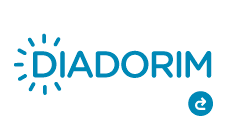EFFECTS OF SWIMMING TRAINING IN OBESITY INSTALLATION IN ADULTS OFFSPRING BORN WITHIN A SMALL LITTER
Resumo
The excessive supply of energy during pregnancy and breastfeeding period, favors the high
accumulation of white adipose tissue (WAT) throughout life, commonly associated with
insulin resistance (IR), dyslipidemia and cardiovascular disease in adulthood. Chronic aerobic
exercises reduce accumulation of WAT, preventing the development of metabolic diseases.
On the 2 nd postnatal day, litter size was set to: normal (NL) with 9 pups per mother and small
(SL) with 3 pups per mother, was used just male rats. After weaning (21 days), NL and SL
rats, were divided into sedentary (Sed) and exercised (Exe), forming 4 experimental
subgroups; NL Sed , NL Exe , SL Sed and SL Exe . From 22–90 days of life exercised groups performed
swimming training 3 times for week during 30 minutes. Litter handling influenced body
weight, retroperitoneal and mesenteric-WAT (p<0.0001) in adulthood. SL Sed animals showed
an increase in these parameters when compared to NL Sed and NL Exe animals (P<0.0001).
Swimming training reduced body weight and WAT deposits in NL and SL groups
(P<0.0001). SL Sed and SL Exe animals showed elevated glucose values at 2h post-glucose load
when compared to NL animals. Kitt was also altered by litter reduction (P<0.0001), with SL Sed
animals had higher Kitt values compared to NL Sed and NL Exe rats. This response was
normalized in SL Exe group.We conclude that lactational hypernutrition causes obesity
associated with disruption of glucose homeostasis and swimming training normalizes insulin
sensitivity but is insufficient to restore glucose homeostasis during glucose tolerance test.
Downloads
Referências
DECLARAÇÃO DE ORIGINALIDADE E DIREITOS AUTORAIS
Declaro que o presente artigo é original, não tendo sido submetido à publicação em qualquer outro periódico nacional ou internacional, quer seja em parte ou em sua totalidade.
Os direitos autorais pertencem exclusivamente aos autores. Os direitos de licenciamento utilizados pelo periódico é a licença Creative Commons Attribution 4.0 (CC BY ): são permitidos o acompartilhamento (cópia e distribuição do material em qualqer meio ou formato) e adaptação (remix, transformação e criação de material a partir do conteúdo assim licenciado para quaisquer fins, inclusive comerciais.

Recomenda-se a leitura desse link para maiores informações sobre o tema: fornecimento de créditos e referências de forma correta, entre outros detalhes cruciais para uso adequado do material licenciado.
















